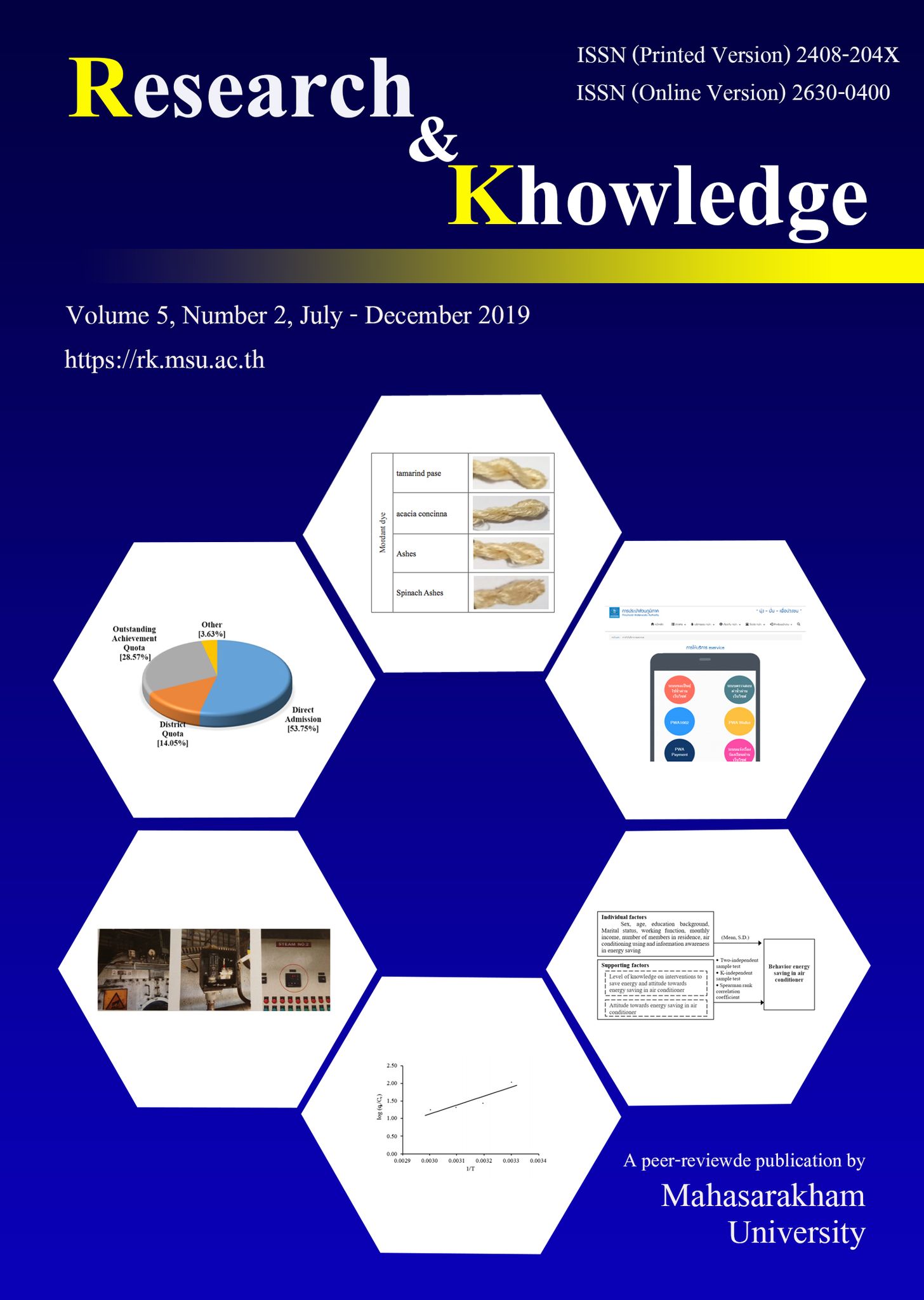Dye powder ability of broken bone tree bark on silk fibers with direct and mordant dye method
Keywords:
ability, natural dye powder, direct dye, mordant dyeAbstract
This research aims to produce the natural dye powder from broken bone tree bark and study the adsorption of dye on silk fibers. Dye from broken bone tree bark was prepared by putting the part of these plants in boiling water for 60 minutes and filter the solution extract. The solvent was evaporated and solid dye was collected. The result yielded a light brown powder. An adsorption of dyes on silk fibers was studied by UV-Visible spectrophotometer. The absorption spectra of broken bone tree bark showed lmax at 296 nm. The direct dye method suitable for broken bone tree bark was found that the conditions for silk fiber dyeing were dye concentration at 75 mg / L, 80 °C, 10 minutes, pH 6. The dye ability of broken bone tree bark of silk fibers showed the highest value about 3.93 mg /g silk. The mordant dye method suitable for broken bone tree bark demonstrated that the conditions for silk fiber dyeing were as follows dye concentration was 75 mg / L,80 °C,10 minutes by mordant from spinach ashes pH 9.9.The dye ability of broken bone tree bark on silk fibers showed the highest value about 8.54 mg / g silk.
References
Chairat M, Rattanaphani S, Bremner J.B. &RattanaphanV. (2005).Adsorption and kinetic study of lac dyeing on silk. Dyes and pigments.231-241. 63
Chatjutamanee, w. (2017). Dye ability of the bark on silk fibers with direct dye and mordant dye method. Paper presented in The9th International Conferenceon Sciences, Technology and Innovation for Sustainable Well - Being (STISWB 2017), Kunming University of Sciences and Technology, China, 26-28 June 2017.
Muhamad, N. Paothong, S. Tansom, U. and Soontornnon, P. (2016). Adsorptive Removal of Textile Dye by Spent Tea Leaves, Research report, Science Technology and Agriculture, Yala Rajabhat University.
Sakulborisut, K.Kraisuwan, S and Piromthamsiri,K.(2016). The effect of mordants on the color fastness of natural brown colored cotton fabric, Science and Technology Branch. Srinakharinwirot University Journal, vol.15(8), January - June 2016, pp.1–11.
The Botanical Garden Organization, BGO Plant Databases, http://www.qsbg.org, Searched on 24/04/2019
Downloads
Published
How to Cite
Issue
Section
License

This work is licensed under a Creative Commons Attribution-NoDerivatives 4.0 International License.








